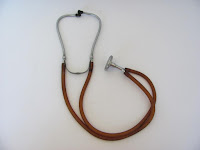Christopher Columbus
As an amateur historian, I sometimes find it disingenuous to ascribe labels of "good" and "evil" to the motivations of people in the past, especially to demonize the heroes of those eras in order to promote political agendas of the present.
For example, in my novel Harper's Donelson, Lieutenant Jamie Harper fights to restore the Union and is, at best, neutral towards the issue of slavery and a member of Bedford Forrest's staff quotes from the Bible as the justification for slavery. In the same vein, Katie Malloy is a teen-aged prostitute who, we learn, would rather commit suicide than be forced to lay with a mulatto. Are these views to be held against them by a modern reader? I think not.
Slavery has been part of the human condition since before civilization began and is still with us. The common morality in the United States in the middle of the nineteenth century, the era of Manifest Destiny, justified slavery under the belief that all non-whites were inferior species and not alternate races of the same species. Some religious denominations actually preached this belief from the pulpit. How can we expect the common man of the era to believe differently?
Yes, it is true that there were abolitionists who violently opposed these views, but they were a minority. Neither Jamie Harper or Katie Malloy pay attention to the politics of the abolitionists. They are focused on the travails of their own lives.
So, are Jamie and Katie good or evil? I believe they are an accurate representation of the values of that age. They are people of their time. I won't condemn them for not caring about the evils of slavery based on our twenty-first century values . They don't live in my century.
The people of the past lived under different belief systems than we do in the present. I find it difficult to believe than most modern persons would behave any differently than they, had they lived among popular ideologies of the past.
For example, in my novel Harper's Donelson, Lieutenant Jamie Harper fights to restore the Union and is, at best, neutral towards the issue of slavery and a member of Bedford Forrest's staff quotes from the Bible as the justification for slavery. In the same vein, Katie Malloy is a teen-aged prostitute who, we learn, would rather commit suicide than be forced to lay with a mulatto. Are these views to be held against them by a modern reader? I think not.
Slavery has been part of the human condition since before civilization began and is still with us. The common morality in the United States in the middle of the nineteenth century, the era of Manifest Destiny, justified slavery under the belief that all non-whites were inferior species and not alternate races of the same species. Some religious denominations actually preached this belief from the pulpit. How can we expect the common man of the era to believe differently?
Yes, it is true that there were abolitionists who violently opposed these views, but they were a minority. Neither Jamie Harper or Katie Malloy pay attention to the politics of the abolitionists. They are focused on the travails of their own lives.
So, are Jamie and Katie good or evil? I believe they are an accurate representation of the values of that age. They are people of their time. I won't condemn them for not caring about the evils of slavery based on our twenty-first century values . They don't live in my century.
The people of the past lived under different belief systems than we do in the present. I find it difficult to believe than most modern persons would behave any differently than they, had they lived among popular ideologies of the past.
Sean Gabhann
What are your thoughts?
Sean Kevin Gabhann is a Vietnam-era
combat veteran of the US Navy. He first
became interested in American Civil War history during the centennial
celebration and he owns an extensive library of primary and secondary material
related to Civil War. He especially wants
to write about campaigns in the West because of a fascination with the careers
of U.S Grant and W.T. Sherman. Gabhann
lives in San Diego, California with his wife, four sons, two daughters-in-law,
three grandsons, three dogs and a cat named Pepper who sometimes thinks she’s a
dog.








